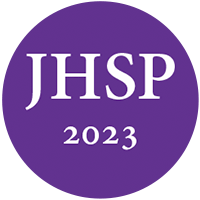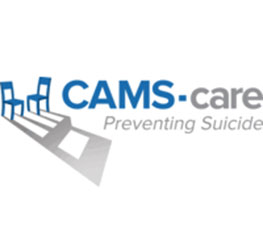The professional home for health service psychologists.
Join a community of 15,000 psychologists and trainees.
Learn it today. Apply it tomorrow.
Connecting you to what you need in your career.
Making a difference.
Wiese, A.D., Wojcik, K.D. & Storch, E.A. Assessment and Intervention for Individuals With Misophonia. J Health Serv Psychol 47, 51–60 (2021). https://doi.org/10.1007/s42843-021-00025-6
Misophonia is a condition characterized by marked distress following the perception of innocuous sounds and is often accompanied by behavioral avoidance. This presentation is currently absent from the Diagnostic and Statistical Manual of Mental Disorders, as it remains poorly understood and understudied. Despite these limitations, there have been recent efforts to develop empirically supported assessment tools and intervention. Interventions for misophonia predominantly incorporate principles of cognitive-behavioral interventions. This article describes in detail the assessment and intervention process of working with an individual with misophonia.
Visit CE.NationalRegister.org to access the continuing education course.
American Psychiatric Association. (2013). Diagnostic and statistical manual of mental disorders (5th ed.). Arlington, VA: American Psychiatric Association.
Bernstein, R. E., Angell, K. L., & Dehle, C. M. (2013). A brief course of cognitive behavioural therapy for the treatment of misophonia: A case example. The Cognitive Behaviour Therapist, 6(10), 1-13. doi: 10.1017/S1754470X13000172
Brout, J. J., Edelstein, M., Erfanian, M., Mannino, M., Miller, L. J., Rouw, R., Kumar, S., Rosenthal, M. Z. (2018). Investigating misophonia: A review of the empirical literature, clinical implications, and a research agenda. Frontiers in Neuroscience, 12(36), 1-13. doi: 10.3389/fnins.2018.00036
Budman, C., Coffey, B.J., Shechter, R., Schrock, M., Wieland, N., Spirgel, A. & Simon, E., (2008). Aripiprazole in children and adolescents with Tourette disorder with and without explosive outbursts. Journal of Child and Adolescent Psychopharmacology, 18(5), 509-515. doi: 10.1089/cap.2007.061
Cavanna, A. E., & Seri, S. (2015). Misophonia: current perspectives. Neuropsychiatric disease and treatment, 11, 2117-2123. doi: 10.2147/NDT.S81438
Dozier, T. H. (2015). Etiology, composition, development and maintenance of misophonia: A conditioned aversive reflex disorder. Psychological Thought, 8(1), 114-129. doi: 10.5964/psyct.v8i1.132
Dozier, T. H. (2017). Counterconditioning treatment for misophonia. Clinical Case Studies, 14(5), 374-387. doi: 10.1177/1534650114566924
Dozier, T. H., Lopez, M., & Pearson, C. (2017). Proposed diagnostic criteria for misophonia: A multisensory conditioned aversive reflex disorder. Frontiers in Psychology, 8, 1-3. doi: 10.3389/fpsyg.2017.01975
Jager, I., de Koning, P., Bost, T., Denys, D., & Vulink, N. (2020). Misophonia: Phenomenology, comorbidity and demographics in a large sample. PloS one, 15(4), 1-16. https://doi.org/10.1371/journal.pone.0231390
Jastreboff, M. M., & Jastreboff, P. J. (2001). Components of decreased sound tolerance: hyperacusis, misophonia, phonophobia. ITHS News Lett, 2(5-7) 1-5.
Jastreboff, M. M., & Jastreboff, P. J. (2002). Decreased sound tolerance and tinnitus retraining therapy (TRT). The Australian and New Zealand Journal of Audiology, 24(2), 74-84.
Jastreboff, P. J., & Jastreboff, M. M. (2014). Treatments for decreased sound tolerance (hyperacusis and misophonia). Seminars in Hearing, 35(2), 105-120 doi: 10.1055/s-0034-1372527.
Johnson, P. L., Webber, T. A., Wu, M. S., Lewin, A. B., Murphy, T. K., & Storch, E. A. (2013). When selective audiovisual stimuli become unbearable: a case series on pediatric misophonia. Neuropsychiatry, 3(6), 569-575. doi: 10.2217/npy.13.70
Kamody, R. C., & Del Conte, G. C. (2017). Using dialectical behavior therapy to treat misophonia in adolescence. The Primary Care Companion for CNS Disorders, 19(5), doi: 10.4088/pcc.17l02105
Kinnealey M & Oliver B (2002). Adult Sensory Questionnaire. Unpublished raw data. TempleUniversity, College of Allied Health Professionals, Department of Occupational Therapy,3307 North Broad Street, Philadelphia, PA 19140
McGuire, J. F., Wu, M. S., & Storch, E. A. (2015). Cognitive-behavioral therapy for 2 youths with misophonia. Journal of Clinical Psychiatry, 76(5), 573-574. doi: 10.4088/JCP.14cr09343
Murphy, D. L., Pickar, D., & Alterman, I. S. (1982). Methods for the quantitative assessment of depressive and manic behavior. In E. I Burdock, . Sudilovsku, & G. Gershon (Eds.), The behavior of Psychiatric Patients (pp. 355-392). New York, NY: Marcel Dekker.
Natalini, E., Dimaggio, G., Varakliotis, T., Fioretti, A., & Eibenstein, A. (2020). Misophonia, maladaptive schemas and personality disorders: A report of three cases. Journal of Contemporary Psychotherapy, 50, 29-35. https://doi.org/10.1007/s10879-019-09438-3
Reid, A. M., Guzick, A. G., Gernand, A., & Olsen, B. (2016). Intensive cognitive-behavioral therapy for comorbid misophonic and obsessive-compulsive symptoms: A systematic case study. Journal of Obsessive-Compulsive and Related Disorders, 10, 1-9. https://doi.org/10.1016/j.jocrd.2016.04.009
Quek, T. C., Ho, C. S., Choo, C. C., Nguyen, L. H., Tran, B. X., & Ho, R. C. (2018). Misophonia in Singaporean psychiatric patients: A cross-sectional study. International Journal of Environmental Research and Public Health, 15(7), 1410. doi:10.3390/ijerph15071410
Schmidt, C.J. & Henry, J.A. (2018). Behavioral intervention in tinnitus management. Journal of Health Service Psychology, 44, 15-18. doi.org/10.1007/BF03544658
Schneider, R. L., & Arch, J. J. (2017). Case study: A novel application of mindfulness‐ and acceptance‐based components to treat misophonia. Journal of Contextual Behavioral Science, 6, 221–225. doi: 10.1016/j.jcbs.2017.04.003
Schröder, A. (2014). Misophonia Sound List (MSL) [Measurement instrument]. Retrieved from https://journals.plos.org/plosone/article/file?id=info%3Adoi/10.1371/journal.pone.0231390.s006&type=supplementary
Schröder, A., & Spape. (2014). Amsterdam Misophonia Scale – Revised (AMISOS-R) [Measurement instrument]. Retrieved from https://journals.plos.org/plosone/article/file?type=supplementary&id=info:doi/10.1371/journal.pone.0231390.s007
Schröder, A., Vulink, N., & Denys, D. (2013). Misophonia: diagnostic criteria for a new psychiatric disorder. PLoS One, 8(1), 1-5. https://doi.org/10.1371/journal.pone.0054706
Schröder, A. E., Vulink, N. C., van Look, A. J., & Denys, D.A. (2017). Cognitive behavioral therapy is effective in misophonia: An open trial. Journal of Affective Disorders, 217, 289-294. http://dx.doi.org/10.1016/j.jad.2017.04.017
Sheehan, D.V. (1983). The Sheehan Disability Scale (page 151). The Anxiety Disease and How to Overcome It. New York: Scribner and Sons.
Siepsiak, M., Sliwerski, A., & Dragan W. (2020). Development and psychometric properties of MisoQuest: A new self-report questionnaire for misophonia. Internal Journal of Environmental Research in Public Health, 17(5), 1797 doi: 10.3390/ijerph17051797.
Taylor, S. (2017). Misophonia: A new mental disorder? Medical Hypotheses, 103, 109-117. doi:10.1016/j.mehy.2017.05.003
World Health Organization (1992). International classification of diseases and related health problems (10th rev., ICD-10). Geneva, Switzerland.
Wu, M. S., Lewin, A. B., Murphy, T. K., & Storch, E. A. (2014). Misophonia: incidence, phenomenology, and clinical correlates in an undergraduate student sample. Journal of Clinical Psychology, 70(10), 994-1007. doi:10.1002/jclp.22098
Zhou, X., Wu, M. S., & Storch, E. A. (2017). Misophonia symptoms among Chinese university students: Incidence, associated impairment, and clinical correlates. Journal of Obsessive-Compulsive and Related Disorders, 14, 7-12. doi: 10.1016/j.jocrd.2017.05.001
Copyright © 2025 All rights reserved. National Register of Health Service Psychologists









